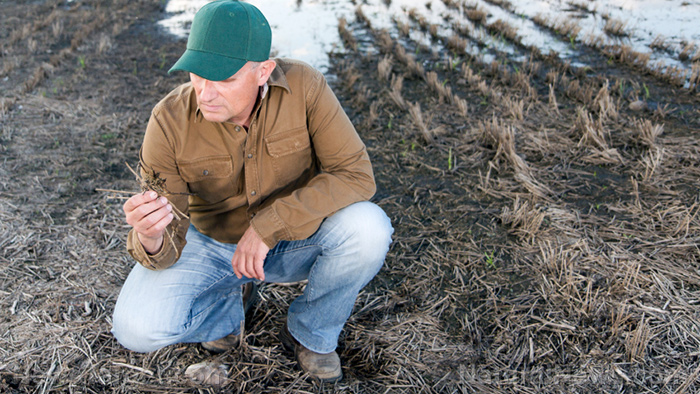Adding silicate rocks to farmland could restore soil, protect against pests and disease, and capture CO2, improving global food security
08/02/2018 / By Edsel Cook

The groundbreaking results of a new British-led study suggested a simple yet profoundly effective way to improve global food supplies and cut down on carbon dioxide (CO2) pollution: Farm crops with crushed silicate rocks.
An international research team headed by University of Sheffield researchers have found that the addition of crushed silicate rocks brought significant advantages to croplands. The fast-reacting silicates were able to absorb CO2, repel crops from diseases and pests, and to improve soil arrangement and fertility.
“Human societies have long known that volcanic plains are fertile, ideal places for growing crops without adverse human health effects,” explained lead author David Beerling, a professor and director at the University of Sheffield.
However, little thought was given to changing up the soil mixture of such productive lands by adding different types of rocks, especially for purposes of capturing carbon. So, the University of Sheffield team took an innovative approach to amending soils by adding large amounts of crushed basalt and other types of silicate rocks.
“This study has transformed how we think about managing our croplands for climate, food and soil security,” said Beerling.
The results of the study have renewed interest in the viability of enhanced rock weathering as a way to remove CO2 from the atmosphere, especially given the technique’s supplementary benefits to food production and soil renewal.
Per Beerling’s findings, enhanced rock weathering could quickly cut down on the amount of CO2 emissions from the energy generation industry.
“Adopting strategies like this new research that actively remove CO2 from it can have a massive impact and be adapted very quickly,” he claimed.
Beerling and his international team published their findings in the February edition of the journal Nature Plants.
Ancient volcanic rocks fight modern air pollution
Silicate rocks trace their origins to ancient volcanism. These tiny grains chemically dissolve once they enter soils. As they absorb CO2, they release nutriment necessary for plants. (Related: Cover crops found to reduce weed infestations, need for tillage while returning nutrients to the soil.)
The greatest advantage of enhanced rock weathering is its compatibility with managed croplands. Other carbon removal strategies will take up arable land or place an additional demand upon local supplies of freshwater used for irrigation.
Since the treatment improves the fertility of the soil, enhanced rock weathering will reduce the need for agricultural fertilizers and pesticides. Cheaper food production would raise the profits of farmers and encourage the agricultural sector to adopt the technique on a wider scale.
Any type of soil could benefit from the introduction of crushed silicate rocks. But arable land will benefit the most due to the regularity with which it is worked.
Ten percent of the planet’s land area counts as arable land. That’s nearly 8.7 million square miles (14 million square kilometers) of fertile soil.
The practice of improving soil quality with crushed rock is not a new technique. Farmers add crushed limestone to acidic soils to bring down high pH levels caused by fertilizer usage and other farming practices.
Furthermore, managed crops have easy access to the road networks, heavy machinery, and other logistical infrastructure required for large-scale adoption of the approach. So, it would be relatively straightforward to implement enhanced rock weathering on a massive scale.
“Our proposal is that changing the type of rock, and increasing the application rate, would do the same job as applying crushed limestone but help capture CO2 from the atmosphere, storing it in soils and eventually the oceans,” said co-author Stephen Long, a professor at the University of Illinois Champaign-Urbana.
“Strategies for taking CO2 out of the atmosphere are now on the research agenda,” agreed co-author James Hansen of Columbia University.
Learn more about other methods for improving crop yield at Harvest.news.
Sources include:
Tagged Under: agriculture, carbon dioxide, CO2, CO2 emissions, crop yield, Ecology, enhanced rock weathering, environment, farming, food security, food supply, research, soil amendment, soil health, soil nutrients, soil quality




















